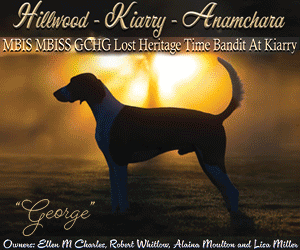Warnings About The New Dog Flu
Click here to read the complete article
134 – July, 2023
 By Amy Fernandez
By Amy Fernandez
Possibly, the only constructive consequence of Covid has been an overdue awareness of the need to track potentially dangerous viral strains as they emerge. In the past couple years we’ve learned more about antigenic mutation, viral replication and airborne transmission than anyone ever cared to know. Then again, dog people tend to be more aware of relevant health issues for obvious reasons. And as we all clearly recall, the earliest news about Covid-19 frequently featured unfounded speculation about if or how it might target our dogs. Didn’t happen. I’m not sure if the latest revelation qualifies as better or worse.
So, we are all familiar with dog flu. The first version to make news, H3N8, was initially documented in dogs way back in 2004. For at least 40 years prior to that it had been circulating in horses, (equine influenza A(H3N8). No one knows precisely when it made the big leap into dogs, but by late 2005 an unidentified respiratory virus was regularly reported in high density populations such as greyhound tracks and animal shelters. At this point, it is endemic to the U.S.
Then, in 2007 new reports added to that crummy news, confirming that a novel type of H3N2, previously classified as a strain of bird flu, had also jumped the species barrier and began to infect dogs in Southeast Asia. No need to elaborate on the frightening speed of global transmission, but by 2015 that brand new Asian bird flu mutation had been reported in 30 states. Logistically, it was a losing battle.
It is important to note that both of these mutated strains were well-established in other species long before they reinvented themselves as a canine threat. And at this point, both are found throughout the general canine population. But it is more important to note that both H3N2 and H3N8 are variants of influenza A, which mutates quickly and endlessly. That’s why we are confronted with this alphabet soup of nasty H and N combinations. I think we’re up to 18 H subtypes and 11 N subtypes–for now.
Click here to read the complete article
134 – July, 2023

Short URL: https://caninechronicle.com/?p=267339
Comments are closed











